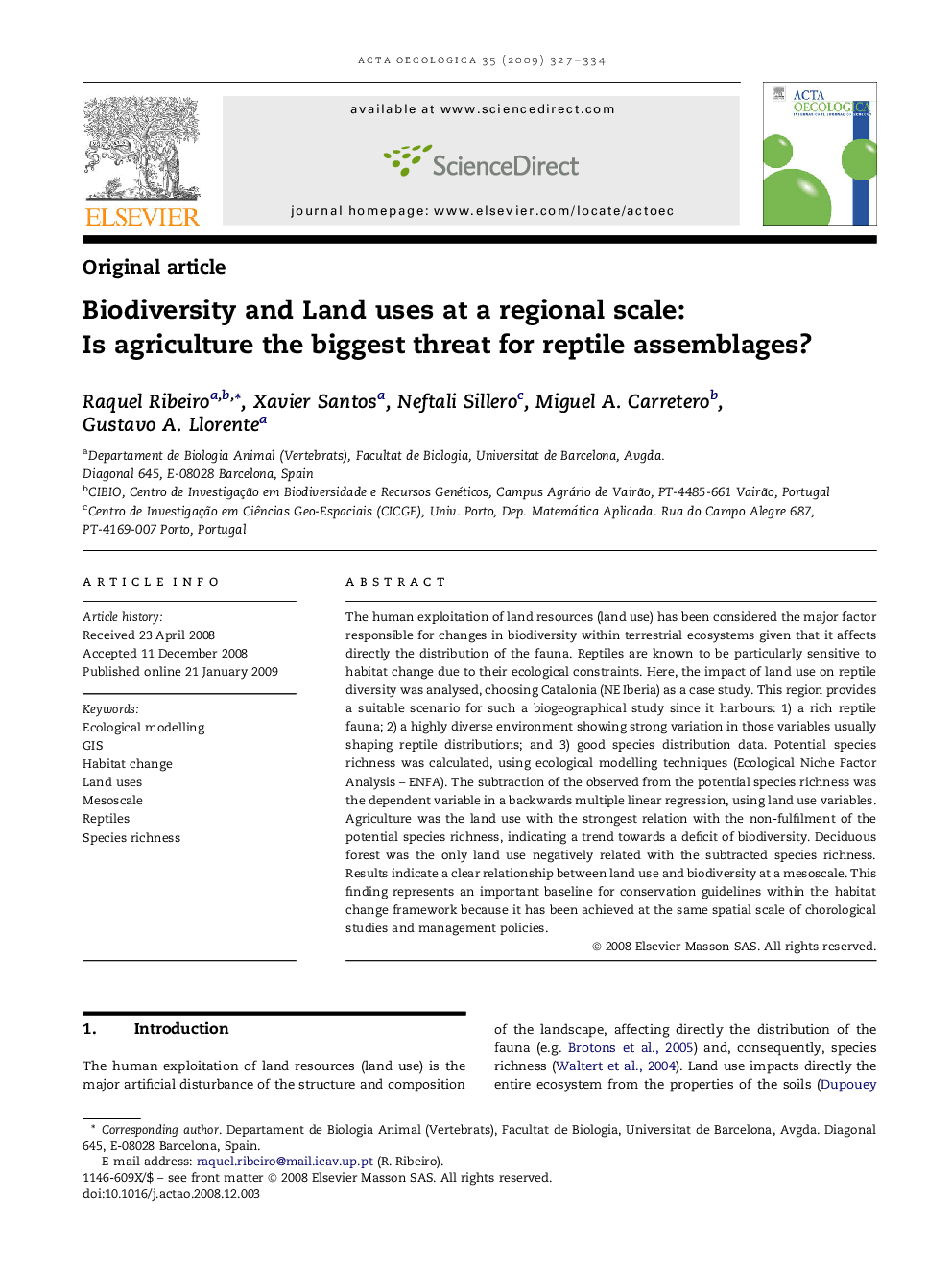| Article ID | Journal | Published Year | Pages | File Type |
|---|---|---|---|---|
| 4381295 | Acta Oecologica | 2009 | 8 Pages |
The human exploitation of land resources (land use) has been considered the major factor responsible for changes in biodiversity within terrestrial ecosystems given that it affects directly the distribution of the fauna. Reptiles are known to be particularly sensitive to habitat change due to their ecological constraints. Here, the impact of land use on reptile diversity was analysed, choosing Catalonia (NE Iberia) as a case study. This region provides a suitable scenario for such a biogeographical study since it harbours: 1) a rich reptile fauna; 2) a highly diverse environment showing strong variation in those variables usually shaping reptile distributions; and 3) good species distribution data. Potential species richness was calculated, using ecological modelling techniques (Ecological Niche Factor Analysis – ENFA). The subtraction of the observed from the potential species richness was the dependent variable in a backwards multiple linear regression, using land use variables. Agriculture was the land use with the strongest relation with the non-fulfilment of the potential species richness, indicating a trend towards a deficit of biodiversity. Deciduous forest was the only land use negatively related with the subtracted species richness. Results indicate a clear relationship between land use and biodiversity at a mesoscale. This finding represents an important baseline for conservation guidelines within the habitat change framework because it has been achieved at the same spatial scale of chorological studies and management policies.
